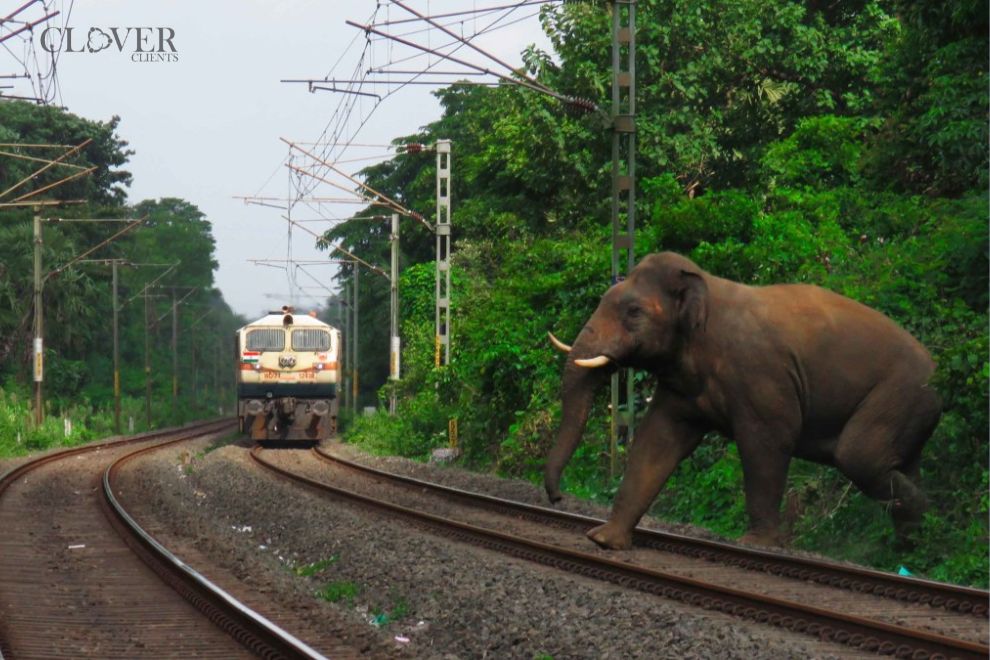The Indian Railways is preparing to implement a groundbreaking AI-based solution known as the “Gajraj system.” This innovative initiative aims to prevent elephant deaths along a 700-kilometer stretch of railway tracks in forested areas. By alerting train drivers about the presence of elephants on the tracks, this system has the potential to significantly reduce fatal collisions and enhance the safety of both wildlife and train operations.
The Problem: Elephant Deaths on Tracks
Government statistics reveal that an average of 20 elephants die each year due to train collisions in India. These incidents primarily occur within the Northeast Frontier Railway (NFR) zone, highlighting a pressing need for intervention.
Union Railway Minister Ashwini Vaishnaw mentioned key regions that were identified for the deployment of the Gajraj system. These include Assam, West Bengal, Odisha, Kerala, Jharkhand, Chhattisgarh, and Tamil Nadu. These areas are known habitats for elephants, making them crucial for the project’s success.
Inspiration from Abroad
The concept of the Gajraj system originated with Anshul Gupta, a former General Manager of NFR. He encountered the technology 13 years ago during a visit to London. Gupta’s curiosity led him to experiment with the system in 2011 and 2016 across different railway divisions.
Despite initial trials, the successful implementation occurred only in December 2022. The system was launched across 11 corridors, significantly reducing elephant fatalities. Gupta, who retired in March 2023, played a pivotal role in bringing this technology to India.
Project Details
The total implementation cost for the 700-kilometre stretch amounts to ₹181 crore. Initially deployed over a 150-kilometre stretch in Assam last year, the system proved effective. Improvements based on field experience have enhanced its accuracy to 99.5%, according to Minister Vaishnaw.
In September 2023, the Northeast Frontier Railway (NFR) highlighted the system’s success. Deployed across 11 elephant corridors, the system has prevented any train-elephant collisions since its implementation. The Intrusion Detection System (IDS) has issued 9,768 alerts from December 2022 to July 2023, averaging 41 alerts daily.
How the Gajraj System Works
When an elephant steps onto the track, the system issues alerts to several parties. These include the train controller, station master, and train drivers. The alerts prompt immediate precautionary actions, preventing potential dangers.
The system utilizes optical fiber cables (OFC) for telecommunication and signaling beneath the tracks. Embedded within the OFC network, the IDS captures vibrations caused by elephants. It then transmits real-time alerts to the division control room and a mobile application. The system can detect and pinpoint elephants within a 5-meter radius of the fiber optic cable.
Significance and Future Implications
The Gajraj system represents a significant step towards enhancing safety for both elephants and train operations. This AI-driven surveillance system is designed to alert train drivers about the presence of elephants on the tracks, thereby preventing fatal collisions. By preventing such collisions, the system not only protects wildlife but also ensures smoother railway operations. Elephants, which are crucial to maintaining the ecological balance, face considerable threats due to train collisions. The Gajraj system addresses this issue effectively, demonstrating how technology can be leveraged to coexist harmoniously with nature.
This initiative showcases the potential of AI in wildlife conservation. The ability of AI to detect and respond to wildlife movements in real-time opens new avenues for protecting endangered species. The system’s high accuracy in detecting elephants on the tracks exemplifies how AI can be utilized to monitor and safeguard wildlife habitats. This real-time responsiveness is crucial, as it allows for immediate action to be taken, thereby significantly reducing the risk of accidents. By integrating AI with existing railway infrastructure, the Gajraj system sets a precedent for innovative solutions in conservation efforts.
Human and Wildlife
The success of the Gajraj System could serve as a model for other countries facing similar issues. Train-wildlife collisions are not unique to India; many countries with extensive railway networks and significant wildlife populations face similar challenges. Implementing such technology globally could significantly reduce human-wildlife conflicts. Countries in Africa and Southeast Asia, where railways intersect with wildlife corridors, could benefit immensely from adopting AI-driven systems like Gajraj. The global implementation of this technology could lead to a significant decrease in wildlife casualties, fostering a more sustainable coexistence between human development and wildlife conservation.
The Indian Railways’ Gajraj system is a groundbreaking project that combines technology and conservation. By addressing the issue of elephant deaths on railway tracks, it highlights the role of innovation in solving critical environmental problems. As the system continues to prove its effectiveness, it sets a precedent for future initiatives aimed at protecting wildlife and promoting sustainable development. The successful deployment of the Gajraj system marks a significant achievement in the realm of conservation technology, offering hope for a safer coexistence between humans and wildlife.












